Sometimes it is necessary to have a surge hopper or tank located over the inlet to a screw press. This allows for batches of material to be conveyed to the screw press, over a short period of time, without overwhelming the throughput capacity of the press.
The problem of bridging is very common in these installations. By bridging we mean that the material to be pressed gets stuck in the bin or silo and will not fall into the press.
The top right hand photo below shows a design which we would never use for bulky material. The bottom, flared about 50°, is way too flat, so bridging occurs. A common cause for bridging is that the free water drains out the bottom and floods into the press. This is no problem for the press. The extra water just comes out through the screen. Because we use the interrupted flight screw design, the cake coming out of the press will maintain the same solids content regardless of how thick or dilute the flow is going into the press.
However, once the water drains out, it leaves a bridge above. That is when the press stops working.
It is common to see vibrators or rappers mounted on the sides of a bin or silo. However, it is also common to see dents in the metal where the bottom of the silo has been hit with sledge hammers, in efforts to break loose material stuck inside. This tells us that vibrators do not always work well.
A principle for preventing bridging is to have vertical walls. The more, the better. So if we have a hopper over a press we like to put two vertical walls at the ends plus a vertical wall in the back. That gives us a cross section shaped like a “V”, but tilted sideways so one leg is vertical. Sometimes we make the vertical wall tilt beyond the vertical, for “reverse curvature”, which is even better.
This same principle can be seen in the photo of the tall SunPure Citrus hydrated lime silo. Note that the conical bottom is offset so that one side is vertical. Also, the angle is very steep, not at all flat. It was designed by Cook Machinery.
Another photo below shows a green flat bottomed surge tank mounted over the inlet of a KP-16 press. A V-Ram pump is used to pump batches of cooked crushed bone to the press. An arm in the bottom of the tank, driven by a top mounted gearbox, sweeps the material into the chute going to the press. No bridging occurs.
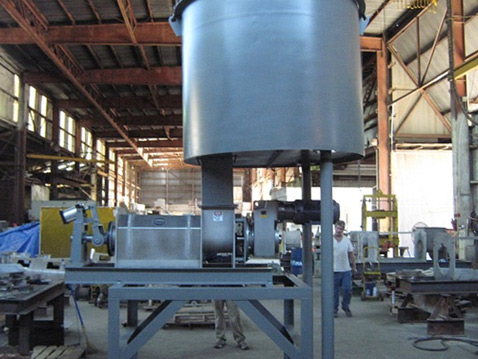 |
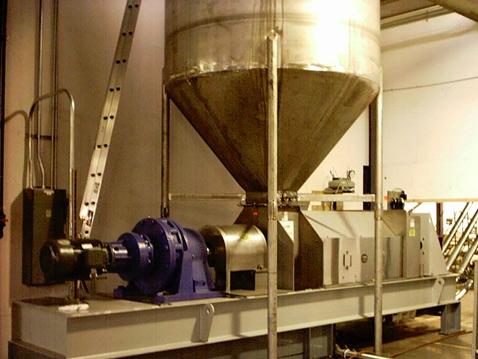 |
|
A SLIGHT ANGLE BOTTOM ASSURES DRAIN INTO PRESS |
THIS TANK BRIDGES DUE TO 50 DEGREE CONE SIDES |
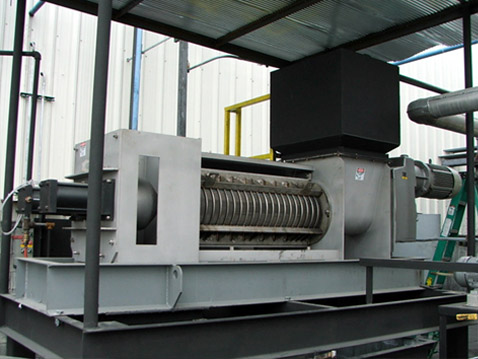 |
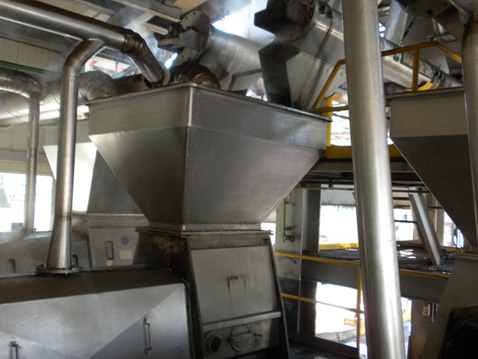 |
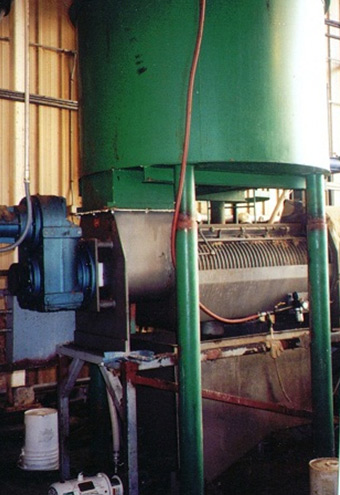 |
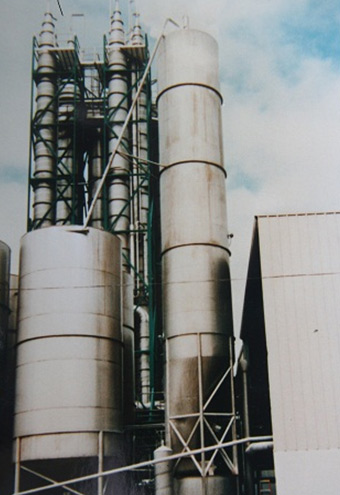 |
|
SWEEP ARM BOTTOM ASSURES FEEDING |
OFFSET CONE ON TALL SILO |
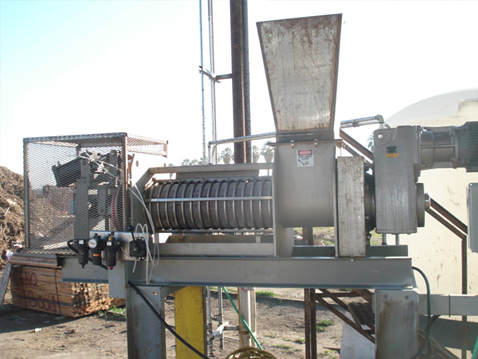 |
|
|
TALL INLET, WITH STEEP SIDES, MINIMIZES BRIDGING |
|
